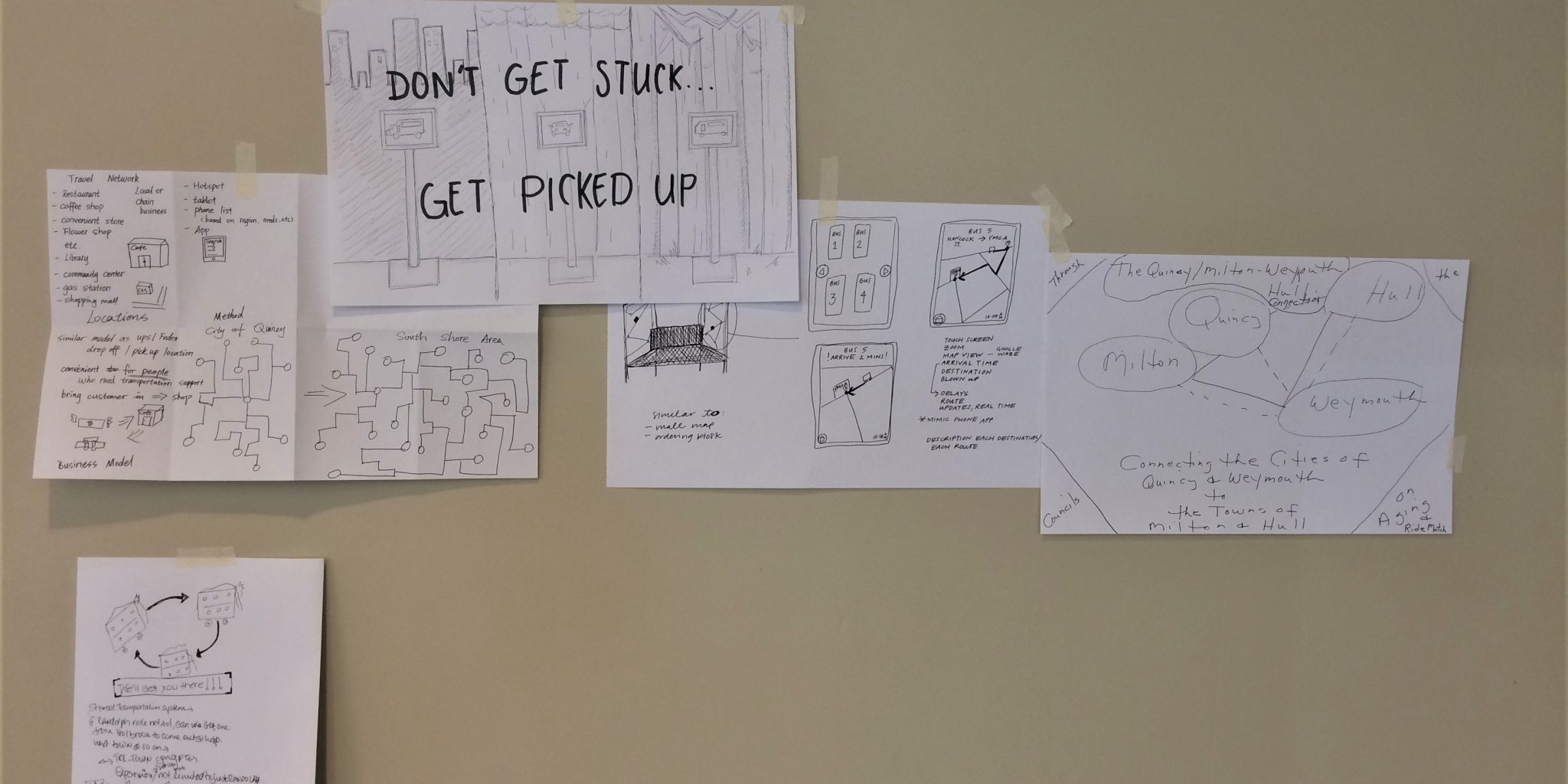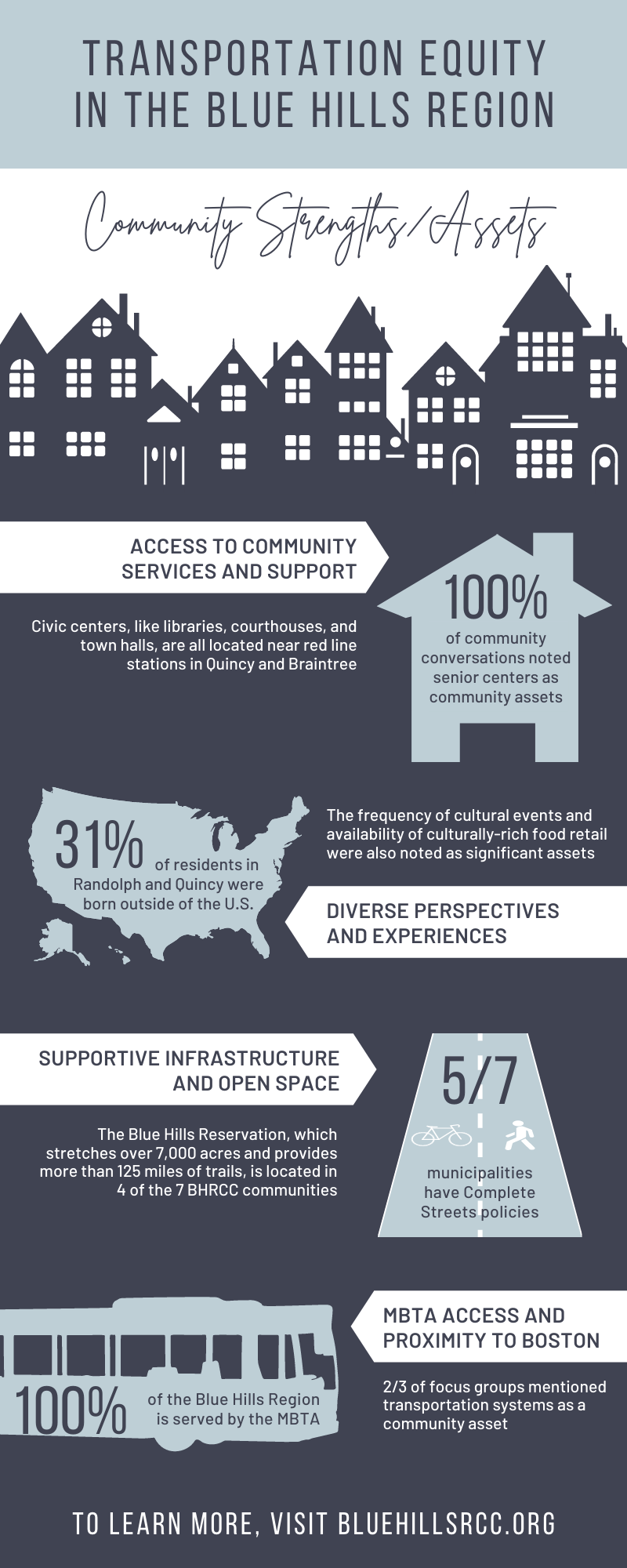Transportation Planning
with a Health Lens
The Blue Hills Regional Coordinating
Council Assessment and Action Plan

In 2019, a group of local health and community leaders, transportation professionals, planners, and municipal employees gathered with a unique vision: to approach transportation planning in the Blue Hills region through a health lens.
The result was the “Blue Hills RCC Assessment and Action Plan,” spotlighting the root causes of inequities in the regional transportation network and presenting actions to form a more inclusive system.
Last Friday, Dec. 11, the Massachusetts Chapter of the American Planning Association awarded the 2020 Social Advocacy Award to the project for advancing social justice, inclusion, and fairness for marginalized populations.
An Equity Lens
What makes this transportation plan different from others? Instead of basing actions on commute and traffic metrics, the plan examines how the transportation system works for those without access to private vehicles, those with disabilities, older adults, and people who face racial and language barriers that make travel more different.
“Historically, our system promoted land uses and development that marginalized non-drivers while under-funding non-auto modes of transportation,” the report says. “The result? A transportation system that does not serve all residents equally.”
How, the plan asks, can the transportation system in Braintree, Hingham, Hull, Milton, Quincy, Randolph, and Weymouth improve to address accessibility barriers and connect residents to essential services, community and cultural centers, and food?
The action plan identified transportation equity challenges and strengths in the Blue Hills Region.
MAPC public health and transportation planners worked with the Blue Hills Community Health Alliance (CHNA 20) and Blue Hills Regional Coordinating Council (BHRCC) to produce the community needs assessment and action plan. Funding was provided by MAPC's PMTA technical assistance, the Tufts Health Plan Foundation, the Massachusetts Department of Transportation, Beth Israel Deaconess Hospital-Milton, and Data Across Sectors for Health (DASH).
“What makes this plan unique is that it’s not just transportation people driving this plan,” said Sharon Ron, a MAPC public health planner and the report’s primary author. “Instead, it was community health leaders, planners, and public health nurses.”
This brought a different perspective, she said. Instead of getting people to work, the stakeholders were most interested in getting people to doctor’s appointments and grocery stores.
It also changed who report authors gathered input from: the plan began with age-friendly focus groups and widened to include others historically overlooked in transportation planning. In addition to these focus groups, community partners, health care providers, and social service providers participated in a three-day design sprint in February 2020 to brainstorm opportunities for improvement.
As COVID-19 surfaced in the middle of the project, access barriers made focus groups harder to organize. Those same people targeted by the action plan were those likely to be most vulnerable to COVID-19.
“The same people who most needed to access services and food during the shut-down were those most vulnerable to COVID, and those that were the hardest for us to reach,” said Ron. This led to an increased focus on how to make services available without transporting homebound individuals to those services.
The Plan
The action plan includes project goals and strategies with specific action steps to help stakeholders achieve those goals. Some strategies build on existing initiatives (such as making improvements to existing resources to make them more easily accessible), while some are new initiatives that respond to pressing needs (such as creating a multi-municipal shuttle service). Some are time sensitive and require immediate action, while others are more transformational and will take time and investment.
Goals for 2025:
- Priority populations (i.e. residents who have limited access to private cars, people with disabilities, and those who have historically experienced racial or economic discrimination) to have easy access to public and/or private transportation options that are reliable, affordable, and safe.
- Community-based organizations, municipal leaders, and other stakeholders to embrace transportation as a social determinant of health (SDoH) and work collaboratively (both across and within their respective sectors) to address relevant determinants.
- Municipal and community-based organizations to make decisions that elevate priorities of residents who have historically been underserved and discriminated against by transportation policy.
- BHRCC communities to have designated and designed spaces and routes for the needs of walkers, bikers, and transit riders of all ages and abilities.
- An increase in the proportion of local, regional, and state level funding allocated towards projects making streets safer and healthier, and making public transportation options more reliable and affordable.
- Individuals and families in the BHRCC region to see health improvements due to reduced social isolation, fewer missed medical and social service appointments, and improved access to the places that are important to them.
The action steps to achieve these goals are grouped into five categories: communication, regional advocacy, local investment, resource coordination, and creating a supportive environment.
Click here to read the full action plan, which includes these detailed strategies and action steps.
Interested in bringing a public health perspective to your project? Reach out to MAPC Public Health Director Barry Keppard at [email protected].


